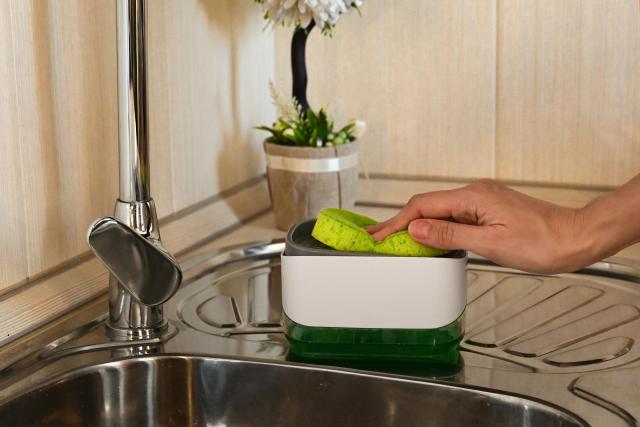
We use food containers in our everyday lives for different purposes: storing food, packing lunch, meal prepping, staying hydrated etc. And for obvious reasons, the cleanliness and hygiene of these containers have a direct impact on our heath. Not only that, but proper maintenance also prolongs their life, so that you can use them for years to come.
So, in this article, we’ve brought you some tips and tricks on how to keep your containers clean.
Cleaning Reusable Containers: The Basics
Let’s start with the basics. For cleaning most reusable containers, washing with warm water and soap is enough. Follow these simple steps:
- Rinse as soon as you can after use, to avoid any food particles sticking to it
- Wash with soap and water
- Use a scrubbing sponge if needed
- Dry properly to prevent bacteria and mold growth
Pro Tip: If a plastic container has retained a bit of the food smell, soaking it in a mixture of baking soda and water for an hour or two can work magic! Just rinse and dry afterward.
Cleaning Reusable Bottles: Don’t Forget the Lid!
Now let’s talk about cleaning reusable bottles. These are great for reducing waste and keeping your drinks cold or hot throughout the day. But if you’re not cleaning them properly, things can get pretty gross.
- Wash After Every Use: Whether it’s a water bottle, smoothie cup, or coffee thermos, always clean your bottle after each use. Bacteria love warm, moist environments, and your bottle can quickly become a breeding ground if you leave it dirty.
- Use a Bottle Brush: The narrow neck of most bottles makes them tricky to clean by hand. A long bottle brush will do the trick, reaching all the nooks and crannies that you can’t get to with just a sponge.
- Clean the Lid and Cap: Don’t forget to clean the lid or cap! They can trap bacteria too, especially if there are small grooves or a seal inside. Wash the lid with warm soapy water and dry thoroughly.
- Deep Cleaning: Once in a while, give your bottle a deep clean by filling it with a mixture of water and vinegar (or baking soda) and letting it sit for a few hours. This helps break down any built-up grime and removes odors.
Cleaning Reusable Water Bottles: Tips for Keeping Them Fresh
Cleaning reusable water bottles is especially important because you’re drinking directly from them, and you don’t want any yucky buildup that could affect your health. Here are some tips to keep your water bottle sparkling:
- Avoid Storing Water Too Long: It’s best to empty and clean your bottle daily to avoid stagnant water and potential bacteria buildup.
- Keep it Dry: After washing, leave the bottle lid off so it can dry completely. This will prevent mold from growing inside.
- Avoid Using Dishwashers: While some bottles are labeled dishwasher-safe, washing by hand can help maintain the finish and seal of your bottle longer.
By following these simple cleaning and maintenance tips, you’ll not only extend the life of your containers but also keep your food fresh and safe. So, what are you waiting for? Grab your favorite container, give it a good wash, and get ready for your next meal—fresh, safe, and eco-friendly!






